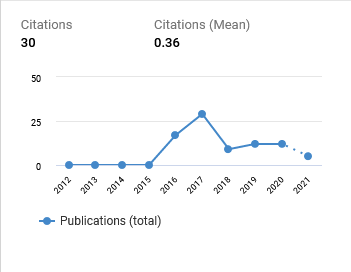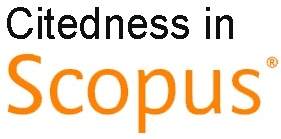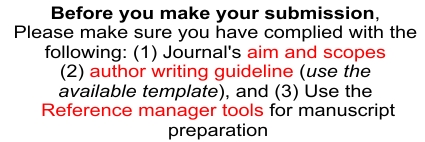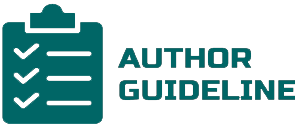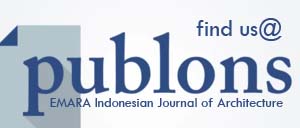Net Zero Healthy Building: Defining the Terms and Criteria with Bibliometric Analysis
DOI:
https://doi.org/10.29080/eija.v9i1.1419Keywords:
Net Zero Energy Buildings, sustainable architecture, energy efficiency, occupant well-being, passive designAbstract
Net Zero Energy Buildings (NZeBs) are a key design and construction paradigm due to sustainable building practices. NZeBs emphasize occupant well-being and reducing dependence on non-renewable energy sources in building design. A rigorous bibliometric investigation will define and standardize NZeBs in this work. This study uses data mining, VOSviewer bibliometric analysis, and a comprehensive literature search to identify key themes and criteria for understanding Net Zero Energy Buildings. The findings show that building system boundaries, passive design, energy efficiency assessments, and adaptive thermal comfort principles help conceptualize Net Zero Energy Buildings. This research improves our understanding of NZeBs and lays the groundwork for future research on sustainable building practices and healthier interior environments by merging data from other sectors.
Downloads
References
Atanasiu, B., Despret, C., Economidou, M., Griffiths, N., Maio, J., Nolte, I., & Rapf, O. (2011). Principles for nearly zero energy buildings. Buildings Performance Institute Europe: BPIE.
Attia, S., Hamdy, M., O’Brien, W., & Carlucci, S. (2013). Assessing gaps and needs for integrating building performance optimization tools in net zero energy buildings design. Energy and Buildings, 60, 110–124. https://doi.org/10.1016/j.enbuild.2013.01.016 DOI: https://doi.org/10.1016/j.enbuild.2013.01.016
DeKay, M. (2012). Integral Sustainable Design: Transformative Perspectives. Routledge. DOI: https://doi.org/10.4324/9781849775366
Deng, S., Wang, R. Z., & Dai, Y. J. (2014). How to evaluate performance of net zero energy building – A literature research. Energy, 71, 1–16. https://doi.org/10.1016/j.energy.2014.05.007 DOI: https://doi.org/10.1016/j.energy.2014.05.007
Freewan, A. A. Y. (2019). Advances in Passive Cooling Design: An Integrated Design Approach. In Zero and Net Zero Energy. IntechOpen. https://doi.org/10.5772/intechopen.87123
Gormley, M., Aspray, T. J., & Kelly, D. A. (2020). COVID-19: Mitigating transmission via wastewater plumbing systems. The Lancet Global Health, 8(5), e643. https://doi.org/10.1016/S2214-109X(20)30112-1
Halawa, E., & van Hoof, J. (2012). The adaptive approach to thermal comfort: A critical overview. Energy and Buildings, 51, 101–110. https://doi.org/10.1016/j.enbuild.2012.04.011 DOI: https://doi.org/10.1016/j.enbuild.2012.04.011
Hudha, M. N., Hamidah, I., Permanasari, A., Gafar, A., Rachman, I., & Matsumoto, T. (2020). Low Carbon Education: A Review and Bibliometric Analysis. Başlık, volume–9–2020(volume9-issue1.html), 319–329. https://doi.org/10.12973/eu-jer.9.1.319
Marszal, A. J., Heiselberg, P., Bourrelle, J. S., Musall, E., Voss, K., Sartori, I., & Napolitano, A. (2011). Zero Energy Building – A review of definitions and calculation methodologies. Energy and Buildings, 43(4), 971–979. https://doi.org/10.1016/j.enbuild.2010.12.022 DOI: https://doi.org/10.1016/j.enbuild.2010.12.022
Morawska, L., Tang, J. W., Bahnfleth, W., Bluyssen, P. M., Boerstra, A., Buonanno, G., Cao, J., Dancer, S., Floto, A., Franchimon, F., Haworth, C., Hogeling, J., Isaxon, C., Jimenez, J. L., Kurnitski, J., Li, Y., Loomans, M., Marks, G., Marr, L. C., … Yao, M. (2020). How can airborne transmission of COVID-19 indoors be minimised? Environment International, 142, 105832. https://doi.org/10.1016/j.envint.2020.105832
Nardell, E. A., & Nathavitharana, R. R. (2020). Airborne Spread of SARS-CoV-2 and a Potential Role for Air Disinfection. JAMA, 324(2), 141–142. https://doi.org/10.1001/jama.2020.7603 DOI: https://doi.org/10.1001/jama.2020.7603
Nicol, J. F., & Roaf, S. (2017). Rethinking thermal comfort. Building Research & Information, 45(7), 711–716. https://doi.org/10.1080/09613218.2017.1301698 DOI: https://doi.org/10.1080/09613218.2017.1301698
Persily, A. K., & Emmerich, S. J. (2012). Indoor air quality in sustainable, energy efficient buildings. HVAC&R Research, 18(1–2), 4–20. https://doi.org/10.1080/10789669.2011.592106
Salom, J., Widén, J., Candanedo, J., Sartori, I., Voss, K., & Marszal, A. (2011). Understanding Net Zero Energy Buildings: Evaluation of Load Matching and Grid Interaction Indicators. Proceedings of Building Simulation. 12th Conference of International Building Performance Simulation Association, Sydney. https://ww.iea-shc.org/Data/Sites/1/publications/DA-TP9-Salom-2011-11.pdf
Samuel, D. G. L., Nagendra, S. M. S., & Maiya, M. P. (2013). Passive alternatives to mechanical air conditioning of building: A review. Building and Environment, 66, 54–64. https://doi.org/10.1016/j.buildenv.2013.04.016 DOI: https://doi.org/10.1016/j.buildenv.2013.04.016
Sartori, I., Napolitano, A., & Voss, K. (2012). Net zero energy buildings: A consistent definition framework. Energy and Buildings, 48, 220–232. https://doi.org/10.1016/j.enbuild.2012.01.032 DOI: https://doi.org/10.1016/j.enbuild.2012.01.032
Tang, S., Mao, Y., Jones, R. M., Tan, Q., Ji, J. S., Li, N., Shen, J., Lv, Y., Pan, L., Ding, P., Wang, X., Wang, Y., MacIntyre, C. R., & Shi, X. (2020). Aerosol transmission of SARS-CoV-2? Evidence, prevention and control. Environment International, 144, 106039. https://doi.org/10.1016/j.envint.2020.106039
Torcellini, P., Pless, S., Deru, M., & Crawley, D. (2006). Zero Energy Buildings: A Critical Look at the Definition; Preprint (NREL/CP-550-39833). National Renewable Energy Lab. (NREL), Golden, CO (United States). https://www.osti.gov/biblio/883663
US EPA. (2014, August 13). A Brief Guide to Mold, Moisture and Your Home [Overviews and Factsheets]. https://www.epa.gov/mold/brief-guide-mold-moisture-and-your-home
Wardhani, D. K., & Susan, S. (2021a). Strategy to Reduce the Covid-19 Transmission through Adaptation of Greenship Interior Space (IS) Criteria. IOP Conference Series: Earth and Environmental Science, 738(1), 012072. https://doi.org/10.1088/1755-1315/738/1/012072
Wardhani, D. K., & Susan, S. (2021b). The Adaptation of Indoor Health and Comfort Criteria to Mitigate Covid-19 Transmission in the Workplace. Humaniora, 12(1), Article 1. https://doi.org/10.21512/humaniora.v12i1.6767
Wu, F., Zhao, S., Yu, B., Chen, Y.-M., Wang, W., Song, Z.-G., Hu, Y., Tao, Z.-W., Tian, J.-H., Pei, Y.-Y., Yuan, M.-L., Zhang, Y.-L., Dai, F.-H., Liu, Y., Wang, Q.-M., Zheng, J.-J., Xu, L., Holmes, E. C., & Zhang, Y.-Z. (2020). A new coronavirus associated with human respiratory disease in China. Nature, 579(7798), 265–269. https://doi.org/10.1038/s41586-020-2008-3

Downloads
Additional Files
Published
How to Cite
Issue
Section
Categories
License
Copyright (c) 2023 Dyah Kusuma Wardhani

This work is licensed under a Creative Commons Attribution-ShareAlike 4.0 International License.
- Authors retain copyright and grant the journal right of first publication with the work simultaneously licensed under a Creative Commons Attribution ShareAlike License that allows others to share the work with an acknowledgment of the work's authorship and initial publication in this journal.
- Authors are able to enter into separate, additional contractual arrangements for the non-exclusive distribution of the journal's published version of the work (e.g., post it to an institutional repository or publish it in a book), with an acknowledgment of its initial publication in this journal.
- Authors are permitted and encouraged to post their work online (e.g., in institutional repositories, pre-print sites, or on their website) prior to and during the submission process, as it can lead to productive exchanges, as well as earlier and greater dissemination of published work.
Funding data
-
Kementerian Pendidikan dan Kebudayaan
Grant numbers kedaireka - matching fund





